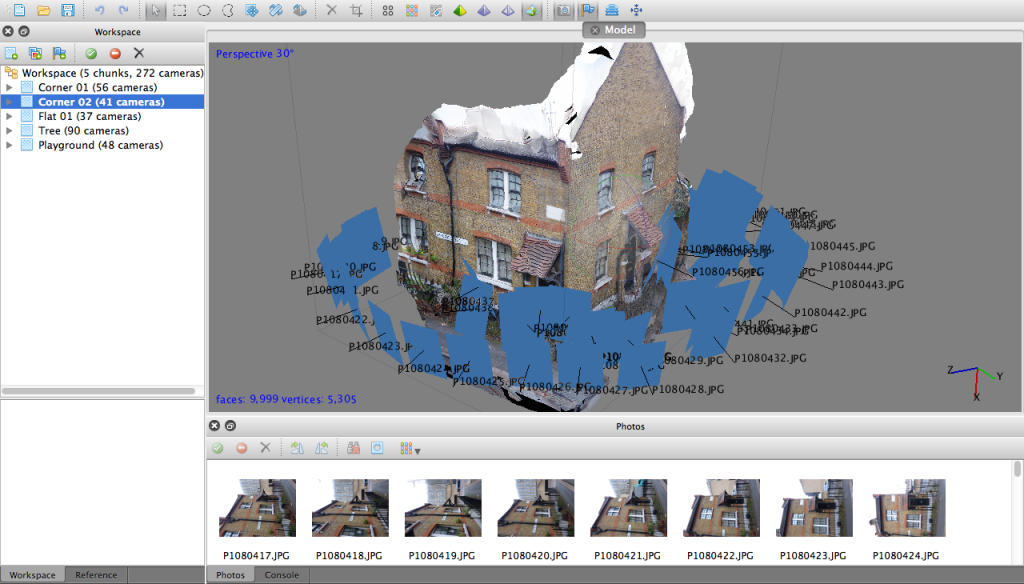Since I had a grasp of Unity—thanks to Make Play Code—I was rather excited when I saw Popathon and Crossover Labs were running a Virtual Reality Taster workshop (with support from the National Theatre). I was given an Oculus Rift earlier this year, and was keen to try creating a VR experience.
On arrival I was immediately pleased to meet a number of people I’d met previously at Interactive at Nottingham; it’s always good to see ‘games’ interacting with other sectors, such as film.
We started off with a couple of hours of photogrammetry, which was all kinds of awesome. Photogrammetry is the trick of photographing an object—a post box, a house—and turning those photos into a 3D model. Like I said, pretty awesome. We wandered the rainy streets around the Old Vic and took dozens of photos of objects that caught our eye. I got carried away, of course, taking hundreds of pictures of three houses, a fallen tree, and what I’m going to call ‘an art’. The trick is to photograph the object from as many different angles as possible, thus allowing the software building the 3D model to work out the depth of the object’s composite elements.
Back in the workshop we plugged the photos into our trial versions of PhotoScan, building point clouds before rendering a 3D mesh of the object, and then the texture (or colours) of the object. The results, even on a medium quality setting, were extremely impressive, if a little ‘melty’ in places. High quality renderings were remarkable, but the processing power required to ‘build’ a whole house crashed my reasonably powerful iMac.
Here’s the stages of recreating a house in PhotoScan. Click to embiggen.
You can see all the models made during the session here on SketchUp.
I was particularly pleased with my tree, seen in the SketchUp gallery in medium-quality.
Here’s the stages of recreating said tree in PhotoScan. Click to embiggen.
The second phase of the workshop saw us importing our models into Unity to build a 3D diorama for VR. I found this step pretty straightforward, given my previous Unity experience, but the introduction was simple and those without experience picked it up quickly.
The resulting dioramas were, after a bit of wrangling with Java versions, exported to Android phones (which was the easiest platform to use) to view with Google Cardboard.
Over-ambitious as usual, my surreal and nightmarish diorama was too complex and demanding to run on a phone. I’m hoping to get it working on an Oculus, but the Unity–Oculus DK1 interface is being tricky so far.
Nonetheless, you can have a look at a non-VR version of my diorama here, if you’re interested. So it turns out I’ve broken the camera in my diorama. Oops. Once I get it fixed I’ll post it back here.
This workshop cost £60, which I think was pretty good value (even if you already had a knowledge of Unity). The guys running it were great and the skills I picked up are both useful and transferrable to other projects. I’ll be keeping an eye out for more workshops from Popathon and Crossover Labs for sure.
Thanks, guys.











